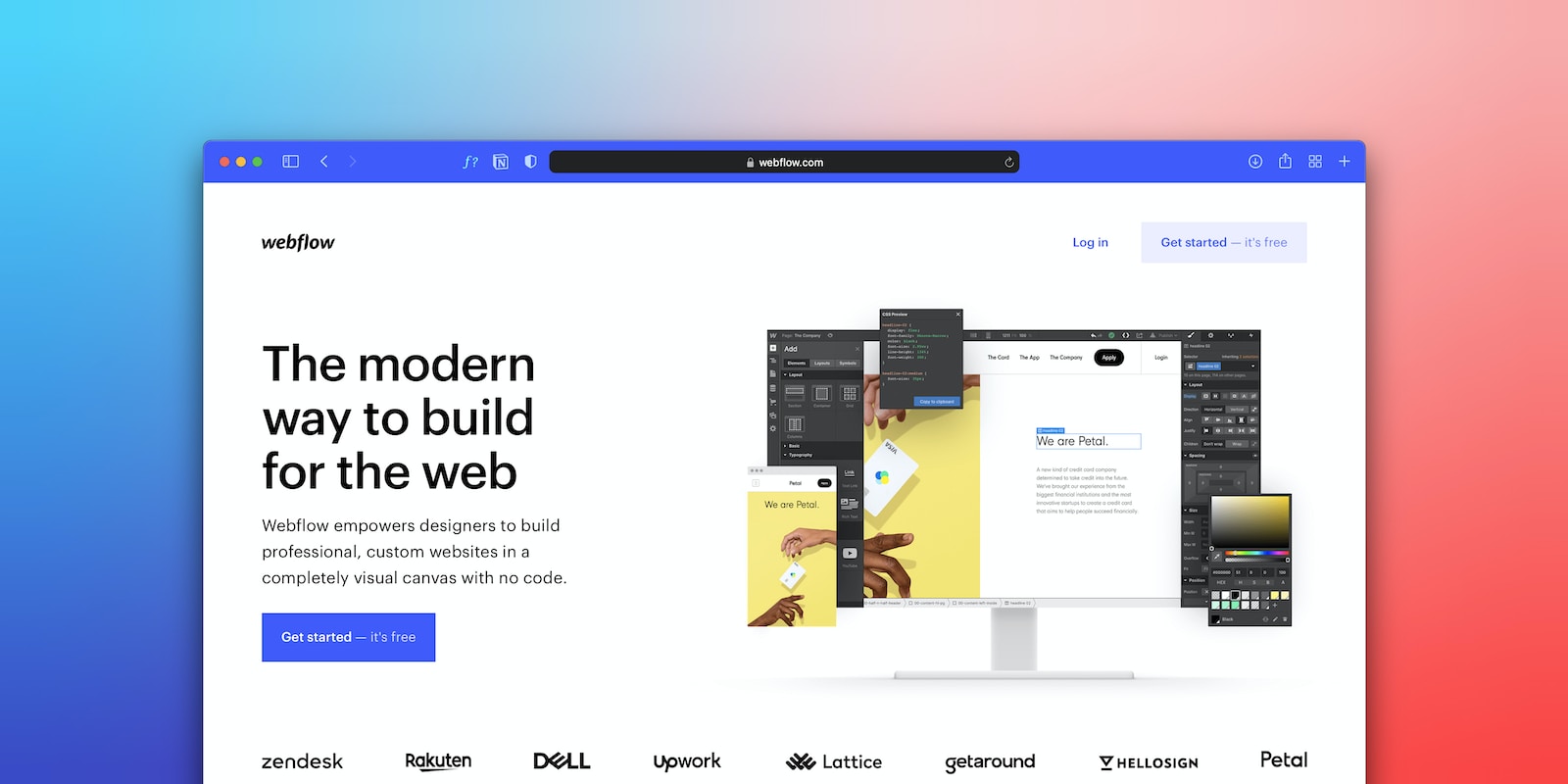In today’s digital world, it’s important for businesses of all sizes to have a strong online presence with a website and SEO. Search engine optimization (SEO) is one of the most important things you can do to make sure your website ranks well in search engine results and gets natural traffic. And part of having a strong online presence with good SEO is having a well-design website built on a modern website builder. I regularly analyze different website builders for their SEO capabilities and today we’re taking a look at Webflow.
Webflow is a popular website builder because it lets you change the way your site looks and has an easy-to-use interface. But the question still stands – does Webflow help with SEO?
The SEO-Friendly Parts of Webflow
Clean and Well-Formed Code: Webflow makes HTML code that is clean and makes sense, which search engines like. This makes it easier for search engine crawlers to understand and index the content of your website, which helps your SEO efforts.
Customizable Metadata: Webflow has a lot of options for optimizing page elements like title tags, meta descriptions, and image alt tags. This level of customization lets you improve your search engine visibility by optimizing your content for relevant keywords.
Responsive Design: With Webflow, you can make websites that look good on all sizes of screens. Since being mobile-friendly is a key ranking factor, Webflow’s responsive design features help your website’s SEO performance.
SSL Security: All sites hosted on Webflow’s platform come with built-in SSL certificates. This secure connection not only protects the information of your visitors, but it also helps your search engine rankings because search engines give more weight to websites that are secure.
Optimizing Site Speed: Webflow’s clean code and efficient hosting infrastructure help websites load quickly. Site speed is a big ranking factor, and with Webflow, you can give your users a smooth experience while also improving your SEO.
Possible Problems with Webflow for SEO
Server-Side Functionality is Limited: Webflow works mostly on the client side, so some server-side features are not available out of the box. This could make it harder for you to use advanced SEO techniques that depend on server-side processing.
Structured Data Limitations: Webflow supports structured data in a basic way, so you can add markup with custom code or integrations. But the platform doesn’t have any built-in structured data features. This can be a problem if you want to use advanced structured data formats like schema.org to their full potential.
URL Structure Limitations: By default, Webflow uses dynamic URLs, which give each page its own unique identifier. Webflow lets you make your own URL structures, but you have to set it up by hand, which can take time for larger websites. Also, dynamic URLs can make it harder to optimize for keywords.
Lack of Built-in Blogging Features: Webflow has some basic blogging features, but it may not be as powerful as platforms that are made specifically for blogging. Even though you can optimize each blog post for SEO, it may be hard to manage categories, tags, and more advanced ways to organize content.
Webflow SEO Best Practices
Keyword Research: Do thorough keyword research to find relevant keywords and phrases that match the search intentions of your target audience. Use the metadata options that you can change in Webflow to optimize your content for these keywords.
On-Page Optimization: Use Webflow’s easy-to-use interface to improve things like titles, headings, and meta descriptions that are already on the page. Focus on making original, high-quality content that meets the needs of users and naturally includes your target keywords.
Mobile-Friendly Design: Make sure that your Webflow site is mobile-friendly and works well on all kinds of devices. Use tools like Google’s Mobile-Friendly Test to check how well your website works on mobile devices and make any changes that are needed for the best user experience.
Link Building: Create a plan for building links to your website to make it more authoritative and easy to find. Make content that is useful and worth sharing to get natural backlinks. Use Webflow’s built-in CMS features to create links within your website, which will help with SEO and navigation.
Monitor Analytics and Performance: Use tools like Google Analytics to keep an eye on how your website is doing. Look at key metrics like organic traffic, bounce rates, and conversions to find places where you can make changes. You can easily track how well your website is doing by integrating Webflow with Google Analytics.
Webflow has a number of SEO-friendly features that can help your site rank higher in search engines. Your SEO efforts will benefit from its clean code, customizable metadata, responsive design, and site speed optimization. But Webflow has some limitations, like limited server-side functionality and support for structured data. You can make your Webflow site as SEO-friendly as possible by following SEO best practices, doing keyword research, optimizing on-page elements, and keeping an eye on performance. In the end, Webflow can be a good choice for those who want a website builder that looks good and is good for SEO, as long as you know its limitations and know how to work around them.



